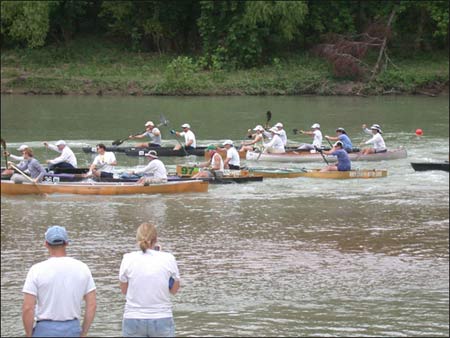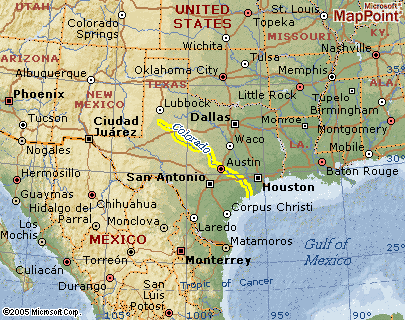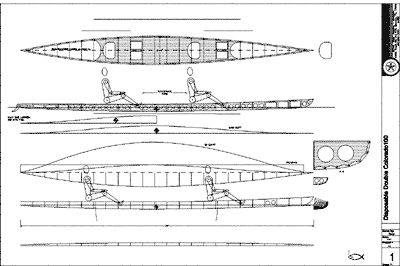Colorado River 100 Boat
design by Milton "Skip" Johnson
There’s been some discussion in public no less about whose fault this is, but Chuck and I are committed to paddling in the Colorado100 (Adventure class) this year. What shall we paddle? Neither of us has anything remotely resembling a suitable boat. I’m finishing up a beautiful 14’ mahogany stripper for a friend (and cash) and not real excited about starting another stripper right now, especially one for a one shot race. A tack and tape boat would work but there’s a little bit of extra drag associated with a boxy section that I’d like to avoid in my lazy dotage.

paddlers at the start of last year's race
Fortunately, so I’m told, the Colorado100 is pretty straightforward run, I’ve only been on sections of the River (the Texas Colorado River, not that other one) around LaGrange. If we’re not going to be beating up the boat much a skin on frame should work and be easy and quick to build. As long as we’re going skin on frame, why not use a shrinkwrap film for a skin and save all the finish work? Actually the shrinkwrap is not a new idea, I tried some 2 mil mylar stormwindow film on an attempt to make a 10# kayak (LeastieBeastie) about 15 years ago. LeastieBeastie weighed in at about 14# and rapidly succumbed to UV but was fun in the meantime. More recently Stephen Bobo covered one of Platt Monfort’s elegant little Geolite Whitehalls with 6 mil polyethylene shrinkwrap, more translucent than transparent but workable (Boatbuilder Sept/Oct 2002).

The Texas Colorado River
Going to build a skin on frame doubles boat as easily as possible that is still quick and easy to paddle. To be quick it needs to be long, 24’ in this case. Time (advancing age) has shown me the light regarding seat position, higher is better. Once you’re up a little bit a true flat top boat will work with foot wells the only thing dipping down into the hull. Pretty simple. Custom foamed seat pads can sit right on top with a little help from some velcro. A few tupperware containers let into the deck between us and we’re ready to go. A small poptop or screwlid opening at the very bow and stern will really expedite getting the inevitable moisture out of boat interior. Moisture may be in the form of condensation or gasp, a gash. A gash is really not that big a deal, most of the Colorado is knee to waist deep, and the sealed hull will build up a little internal pressure and slow a leak down. At least it did in the LeastieBeastie when I was out in the middle of Lake Hamilton years ago, but that was surely the hardest I’d ever paddled.
Materials are minimal, 2 sheets underlay ply and I have a lot (100s) of 8’ bead and cove mahogany strips. Tried to think of a way to get 2 stringers out of a strip but then realized that cutting off the cove end leaves a curved top stringer that would fit into a slot formed with a ¼” hole in the top so there is no hassle in making all those stringer slots in the frames. A hole and two short straight cuts and you’re done. Since the frames are in two halves, one each side of the center stringer, they can be stapled together and cut at the same time. Looks like its going to be mainly a lot of time at the drill press but for me that’s one of the most soothing of all building operations.

(click image for larger view)
A few comments on the rudder and I’ll shut up. A nice NACA section high aspect ratio rudder is a thing of beauty that works really well, most of the time. When it’s stalled might as well be a flat plate which is providing some turning force but adds a lot of drag which is just like dropping a little anchor off the stern just when you need it least. Mother Nature evolved a means of providing a lot of force in the water right now smartly every time. A vortex generating fin may not match the lift/drag numbers of a high aspect NACA section, but it’s close and the lift happens right now every time, no excuses no stall.

